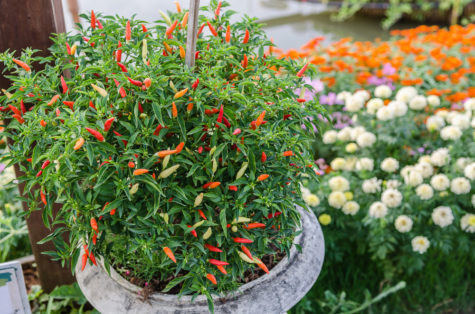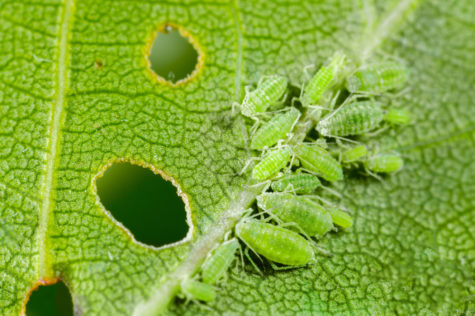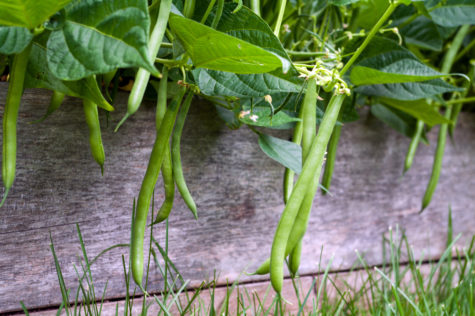If you love the idea of growing your own vegetables but don’t have the luxury of a large garden or allotment, you can grow an impressive range of tasty vegetables in planter boxes and pots. Before you rush off to buy seeds, you’ll need to consider a few things:

Inexpensive, healthy and beautiful, growing your own vegetables has many benefits. Image credit: @les.vos
1. What vegetables do you want to grow?
If you want to grow salads, then you don’t need very deep soil, a shallow planter or cloche is ideal.
If you want to grow cucumbers you need to allow for tall climbing growth and use a trellis to support developing fruit. So what you intend to grow will determine soil depth, the type of soil required, and the watering needs. If you are growing a selection of different plants, then you may need to plan sections with different soil and watering conditions. You might even like to give crop rotation a try, read more on this below.
Tomatoes
Tomatoes grow well together with herbs like basil so this could be a great combination to try in summer. Growing tomatoes requires rich soil, climbing support and generous watering as well as the best summer sun for many hours of the day. Tomatoes are productive, deliciously tasty and useful in the kitchen all summer long. Too many tomatoes? Make tomato paste and freeze it for winter pizza sauces, or whip up a batch of tasty chutney. If you have too much basil, you can make pesto!

Enjoy cooking with the fruits of your labour. Image credit: @garlicrosemaryandsalt
Beans and peas
Beans and peas are attractive plants with gorgeous colourful flowers loved by bees. These plants will want to climb, so think about where the planter box is located and if you need to add trellis or canes for your chosen plants to thrive. Peas and beans need similar conditions with rich soil and manure if possible, so you can mix and match these two crops in summer. Peas are hardy and can also be grown over the winter but most beans (except broad beans) need summer sunshine.

Beans for days! Beans are one of the most productive vegetables to grow. Image credit: @kitchenvignettes
Carrots
Carrots are often a favourite for children to try. They are a fussy crop, which can be difficult to germinate and the crop may need to be thinned. The soil must be stone-free because carrots will form around any obstruction and you may get some crazy shaped vegetables! Growing carrots is definitely worth it for the taste and the gorgeous smell of freshly picked roots. Eat them quickly before that delicious scent disappears.

Carrots are a fun vegetable to grow and pick! Image credit @tusharsabale_gardener
Radishes
Radishes are a quicker alternative to carrots or you could try adding a row to accompany the carrots. Children will be delighted how quickly radishes grow.

Easy to grow, radishes add a pop of colour and spicy flavour to salads. Image credit: @dirt_94
Squash and pumpkins
Squash and pumpkins are fabulous homegrown fruits but be warned! These plants can grow over 6 feet long! If you have a tiny garden, you will be tripping over these plants all summer long, or you can grow squash above ground with a trellis! Their gorgeous showy flowers are usually orange and can be eaten, but if you don’t leave some there will be no fruit. Sow these in late spring and by October you can pick lots of chunky fruit to carve in time for Hallowe’en.

Pumpkins have to be one of the most fun fruits to pick! Image credit: @lottie_thyme_
Potatoes
Potatoes grow really well in bags and containers. The important thing is to keep covering the tubers with soil as they grow. This is really important because any potatoes exposed to the light turn green and these are poisonous. So cover around the growing tips as you notice new tubers forming. When the plant flowers die back, your potatoes are ready to pick.

Enjoy harvesting and eating your own potatoes. Image credit: @greenmonkees
2. Drainage
Good drainage is really important for healthy plants, so if you can leave a hole or two in the bottom of your planter box for water to drain away, that will help. You may want to line the whole box and then add some pebbles at the bottom, placing your soil on top of these.

You can even grow maize in a vegetable planter box. Image credit: @valhalla_cove
3. Soil
Soil needs to be full of goodness to provide energy for your plants. One grow bag is sufficient for 3 tomato plants, 2 cucumbers or one courgette or squash plant. Calculate how much soil you are going to need and buy lots!
If you have garden soil to add in, that’s a bonus and if you can find some manure, that will help most vegetables to grow really well. It does need to be well-rotted though so check with any farmer who delivers manure. Other ways to boost soil fertility include adding homemade compost if available and leaf mould from last autumn’s leaves.
If leaves are collected into bags and allowed to sit over the winter, they add humus to your planter box which your plants will enjoy. Finally, if you have comfrey leaves, pick several leaves and add them directly to the box where they will decompose during the growing season, releasing valuable nutrients for your vegetables.

Photo by Jonathan Kemper on Unsplash
More on this: Is Mulch The Same As Compost?
4. Light
Vegetables need plenty of light, ideally 4 but preferably 8 hours of full sun each day to get the best results. Make sure no shrubs, trees or garden sheds shade your planter box and place it in a site where it gets lots of natural light.
5. Watering
Watering can be done via an automatic watering system. This is really useful if you’re a busy person and forget one day! Tomatoes, cucumbers, aubergines, beans, peas and squash will need water every day and in hot weather, it is best to water them in the early morning and again in the evening when the sun is not too hot.
Potatoes and carrots will need watering every 2-3 days and salad crops will wilt if they lack water so it is best to give them some water most days, particularly in a heatwave.

Gert creative with your vegetable planting and don’t forget the water! Image credit: @shadesofgreenhv
What is crop rotation?
In a nutshell, crop rotation is where different crops are planted in succession in the same piece of soil over period of 3 or 4 years to prevent soil exhaustion.
You can plant tomatoes and cucumbers in the first year because these two plants are fairly compatible and have similar needs. Herbs grow well with these two as well.
In the second year, you need to add some nitrogen to the soil which happens magically by planting peas and beans. In year 3, plant cabbages and other brassicas. Finally, year 4 arrives and it is time to plant root vegetables.
Here’s a guide to the plants to grow in each year. These vegetables will all grow happily in the summer.
Year 1
Plant tomatoes, cucumbers, squash, pumpkins, aubergine, herbs and potatoes.
Soil conditions: These plants need humus-rich soil, the kind you get in homemade compost, grow bags, new bags of compost, and some garden soil with added manure if available. Apply liquid feed when the plants flower.
Year 2
Plant beans, peas, onions and garlic.
Soil conditions: Beans and pea plants fix nitrogen in the soil. Onions and garlic like the same conditions. Add manure and homemade compost or purchased compost. Feed plants regularly.
Year 3
Plant kale and brassicas like cabbage, cauliflower and sprouts.
Soil conditions: These plants like firm ground so pat them in well. They love to grow after a crop that has had manure, such as peas and beans.
Year 4
Sow root crops like carrots, parsnips, beetroot, radishes, turnips and swede.
Soil conditions: Remove any stones because the new seeds will develop around these and you may get some odd shapes in your root vegetables. Do not apply manure, the roots will fork towards it and you will end up with unusual shapes!
Tina’s TIPS:
Free soil and fertiliser:
- If you are growing vegetables you will have a lot of vegetable waste that can be composted. This can be transformed into wonderful free food for all your plants so I encourage you to set up a compost bin and get started. Compost takes a minimum of 4-5 months for a good mix. Make sure you add separate layers of brown waste like paper envelopes or old newspapers followed by a green layer of vegetable peelings. Grass cuttings are a really fast activator for the compost bin. If you regularly add grass cuttings, twigs, eggshells, fruit cores and even egg boxes, the whole mixture can provide compost quickly. Use it to top up your planter box throughout the growing season.

Feed your vegetables with rich compost. Image credit: @gillianliveslightly
- Free fertiliser can be obtained by collecting the liquid which tends to seep out the end of the compost bin. This liquid can be collected if your bin is on stones and if you add this to some water in your watering can, this works like a miracle grow for hungry vegetables. You can also make weed fertilisers from nettle and dandelion leaves (or comfrey leaves) soaked in water for a few days. Your vegetables will drink this up and reward you with a bumper crop.

Save this pin for later






